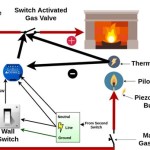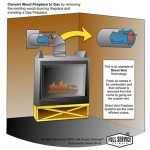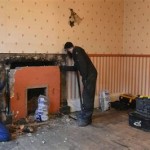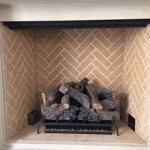Wood Burning Stove Fireplace Ideas: Integrating Warmth and Style
The integration of a wood burning stove into a fireplace setup represents a fusion of traditional charm and modern heating efficiency. Wood burning stoves offer a focused and controllable heat source, often surpassing the efficiency of traditional open fireplaces. When designing a fireplace around a wood burning stove, considerations must be made regarding safety, aesthetics, and functionality.
This article explores various wood burning stove fireplace ideas, focusing on design considerations, safety precautions, installation tips, and aesthetic integration. Careful planning and execution are paramount to achieving a functional and visually appealing heating solution.
Matching Style and Stove: Harmonizing Aesthetics
The first step in incorporating a wood burning stove into a fireplace is determining the overall aesthetic of the room. The stove itself should complement the existing décor, or the décor can be adapted to suit the style of the stove. Stoves are available in various finishes, including matte black, enamel colors, and even cast iron with intricate detailing. The choice of finish and style should reflect the desired ambiance of the space.
For a traditional look, a cast iron stove with a detailed design can be paired with a brick or stone fireplace surround. This creates a rustic and cozy atmosphere, reminiscent of older homes and cottages. The hearth can be made of brick, stone, or slate, further enhancing the traditional aesthetic.
For a more modern aesthetic, a sleek, contemporary stove with clean lines and a minimalist design can be chosen. These stoves often feature glass doors that provide a clear view of the flames. They can be paired with a concrete or tile fireplace surround for a clean and modern look. A floating hearth or a minimalist mantel can further enhance the contemporary feel.
Transitional designs blend traditional and modern elements. A painted brick fireplace with a simple mantel can be paired with a stove that has both classic lines and modern features like air wash systems that keep the glass door clean. This allows for a versatile design that can fit into a variety of homes.
The size of the stove is also a crucial consideration. It should be appropriately sized for the room to avoid overheating. A stove that is too large will make the space uncomfortable, while a stove that is too small will not provide sufficient heat. Calculating the square footage of the room and considering factors like insulation and ceiling height will help determine the appropriate BTU output for the stove.
Color plays a significant role in tying the stove and fireplace together. A neutral color palette can create a calming and sophisticated atmosphere, while bolder colors can add personality and visual interest. Consider using complementary colors or contrasting shades to create a visually appealing focal point. For example, a black stove can be paired with a light-colored brick fireplace surround for a striking contrast.
Safety and Installation: Adhering to Codes and Best Practices
Safety is paramount when installing a wood burning stove. Adherence to local building codes and regulations is crucial. It is essential to consult with a qualified professional, such as a certified stove installer or a building inspector, to ensure that the installation meets all safety requirements.
Proper venting is critical for safe and efficient operation. The stove must be connected to a chimney flue that is appropriately sized and in good condition. The flue should be inspected and cleaned regularly to prevent creosote buildup, which can pose a fire hazard. If the existing chimney is not suitable, a new chimney may need to be installed.
Clearance to combustible materials is another crucial safety consideration. The stove must be installed at a safe distance from walls, furniture, and other flammable objects. The manufacturer's instructions will specify the required clearances. Heat shields can be used to reduce the required clearances in some cases.
The hearth must be made of a non-combustible material, such as brick, stone, or tile. It should extend far enough in front of the stove to protect the floor from sparks and embers. The hearth size requirements are typically specified in the local building codes.
A carbon monoxide detector should be installed in the room to alert occupants to the presence of this odorless and potentially deadly gas. The detector should be placed in a location where it can be easily heard.
Fire extinguishers and smoke detectors are essential safety devices that should be readily available in the home. Regular maintenance of the stove and chimney is crucial for safe operation. This includes inspecting the stove for cracks or damage, cleaning the chimney regularly, and ensuring that the door seals are in good condition.
Consider the floor loading capacity. Wood burning stoves, especially those made of cast iron, can be quite heavy. The floor must be able to support the weight of the stove and any hearth materials. If the floor is not strong enough, it may need to be reinforced.
Functional Design: Optimizing Heat and Efficiency
Beyond aesthetics and safety, functional design plays a critical role in optimizing the heating efficiency and overall usability of a wood burning stove fireplace. Efficient heat distribution ensures that the space is warmed effectively, while practical design considerations enhance the user experience.
Consider the placement of the stove within the fireplace. Placing the stove centrally can maximize heat radiation into the room. If the fireplace is located in a corner, a corner-mounted stove can be an efficient and space-saving option. The stove should be positioned to allow for easy access for loading wood and cleaning.
Air circulation is crucial for even heat distribution. Consider using a fan or blower to circulate warm air throughout the room. Some stoves come with built-in blowers, while others can be retrofitted with aftermarket blowers. The fan should be positioned to draw cool air from the floor and circulate warm air throughout the room.
Proper insulation around the fireplace surround can help to retain heat and prevent heat loss through the walls. Use a heat-resistant insulation material to insulate the space behind the fireplace surround. This can significantly improve the energy efficiency of the stove.
Wood storage is another important consideration. Having a convenient place to store firewood near the stove will make it easier to keep the stove burning. Consider building a wood storage area into the fireplace surround or using a decorative wood rack. Ensure that the wood is stored in a dry location to prevent it from becoming damp or moldy.
Choose a stove with features that enhance its usability. Features such as air wash systems that keep the glass door clean, secondary combustion systems that improve efficiency, and thermostatic controls that automatically adjust the heat output can make the stove easier to use and more efficient. Consider the size of the firebox and the ease of ash removal when selecting a stove.
Consider using the stove as a backup heating source. In the event of a power outage, a wood burning stove can provide a reliable source of heat. This can be especially important in areas that experience severe weather. Ensure that you have a sufficient supply of firewood on hand in case of an emergency.
Ensure proper ventilation for the room. While the stove vents combustion gases through the chimney, it's important to ensure adequate fresh air supply to the room to support combustion and maintain air quality. A tightly sealed home might require an external air intake for the stove.
Think about the long-term maintenance requirements. Wood burning stoves require regular cleaning and maintenance to ensure safe and efficient operation. Choose a stove that is easy to clean and maintain, and be prepared to invest time and effort in keeping the stove in good condition.
The design of the hearth is important from a functional perspective. A raised hearth can make it easier to load wood into the stove and can also provide a place to sit and warm up. Consider the height and depth of the hearth to ensure that it is comfortable and functional.
Selecting the right type of wood is also crucial for efficient burning and minimizing creosote buildup. Seasoned hardwood, such as oak, maple, and ash, burns hotter and cleaner than softwood, such as pine and fir. Avoid burning wet or green wood, as it produces more smoke and creosote.

Amazing Log Burner Fireplace Surround Ideas Direct Stoves

Know How Best Living Room Ideas With A Fireplace Arlo Jacob

300 Best Log Burner Ideas Living Room Wood Fireplace

4 Fireplace Hearth Ideas Arada Stoves

Corner Wood Stove Mantel Decor Home Fireplace Burning Stoves Living Room

Fireplace Ideas For Wood Burner Stoves Burning Stove Fitters Inglenook Fireplaces N Fitting

20 Ideas To Decorate Around A Wood Burning Stove

Amazing Log Burner Fireplace Surround Ideas Direct Stoves

Brick Fireplace Design Installation Scarlett Fireplaces

40 Wood Burning Stove Ideas Fireplace Universe
Related Posts








